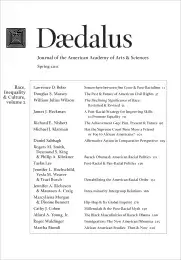Challenging History: Barack Obama & American Racial Politics
When the American Academy of Arts and Sciences devoted two issues of its journal Dædalus to the topic of “The Negro American” in 1965 and 1966, the United States had reached the triumphant end of the second of three eras of racial politics that characterize the American national experience thus far. The election of Barack Obama to the presidency in 2008 raised hopes that the end of the third era was near, after which racial inequalities and conflicts would no longer be central to national life. Although the demographics of the 2008 electorate signaled the impact of historic racial transformations and the possibility of even greater changes, the campaign offered at best a glimpse of how the central issues of the third racial era in U.S. history might be resolved. As long as the debate over managing race-based discrimination and inequities persists, the current era cannot be said to have ended.
We view the three eras of American racial politics in terms of rival racial policy alliances: that is, durable coalitions of political actors, activist groups, and governing institutions united by their stances on the central racial policy issues in the eras of American politics their conflicts help define.1 In the slavery era of 1790 to 1865, pro-slavery and antislavery alliances fought over whether slavery should be maintained and extended. Next, after a period of transition, the Jim Crow era emerged in the mid1890s and endured (for practical purposes) until . . .
